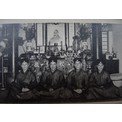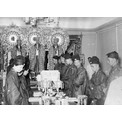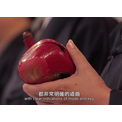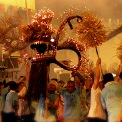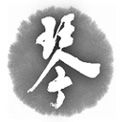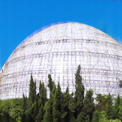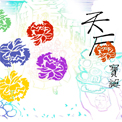 Collections
Collections The Oral Legacies (I) - Intangible Cultural Heritage of Hong Kong
The Oral Legacies (I) - Intangible Cultural Heritage of Hong Kong Quanzhen Temples Taoist Ritual Music
Quanzhen Temples Taoist Ritual Music Historical Background of Quanzhen Temples Taoist Ritual Music
Historical Background of Quanzhen Temples Taoist Ritual Music
Taoist beliefs and rituals in Hong Kong originated mainly from the Pearl River Delta region of Guangdong. The two main schools are the Orthodox Unity (Zhengyi) and the Complete Perfection (Quanzhen). “Quanzhen Taoist temples” is a general term that covers all Taoist organisations of the Quanzhen School currently in Hong Kong, many of which were formed by Taoist followers from Guangdong between 1920 and 1950. They include Po To Tong (1921), Fung Ying Seen Koon (1929), Tung Seen Tan (1938), Wun Chuen Sin Kwoon (1944), Ching Chung Koon (1950) and Yuen Yuen Hok Yuen (1953), as well as the new Taoist temples founded after the 1960s in Hong Kong. They all worship Lü Chunyang, one of the “Five patriarchs of Quanzhen”, practise the Quanzhen ritual, abide by the Quanzhen scriptures, and acknowledge their coming under the “Quanzhen Longmen School”.
Taoist rituals contain both still and dynamic elements: the former include the layout and decoration of the altar, ceremonial garb and headdress, texts and scriptures; the latter refer to the singing, chanting and gestures by the ceremonial priests. In conducting the singing and chanting, the priests would read aloud or chant the scriptures to a prescribed rhythm and tone, at times accompanied by music. This “vocal” and “instrumental” music used in Taoist rituals is generally referred to as “Tones for Chanting” (jingyun) by Taoists, and “Taoist music” by non-Taoists. This “vocal” medium is generally believed to have originated from the work Yun Zhong Yin Song Xin Ke Zhi Jie by Taoist priest Kou Qianzhi (365 – 448) of the Northern Wei period.
The ritual music of the Quanzhen Taoist temples in Hong Kong adopts the centuries-old tradition of temples in Guangdong, namely the Sanyuan Temple in Guangzhou, Qingyun Grotto of Chashan of Nanhai, the Yunquan Xianguan of Xiqiao Mountain in Nanhai, and Luofu Shan, etc. Since the preservation and perpetuation of Taoist rituals and scriptures in Hong Kong started off by a few senior Taoist masters such as Hou Baoyuan and Deng Jiuyi, the ritualistic music now used in all Taoist temples in Hong Kong basically share many similarities.
The introduction of the Guangdong Quanzhen practices to Hong Kong in the 1950s was a transplanting process, complete with lineage, organisation, scriptures and rituals.
They formed the basis for the development of jingyun in Hong Kong. In the decades of transmission that followed locally, other influences with local cultural features such as Cantonese opera, Cantonese operatic song, Cantonese instrumental tunes, and other religious musical genres such as Confucian and Buddhist music came into Quanzhen music and turned it into Taoist music with vernacular features of Hong Kong.
